#jefferson county washington
Text
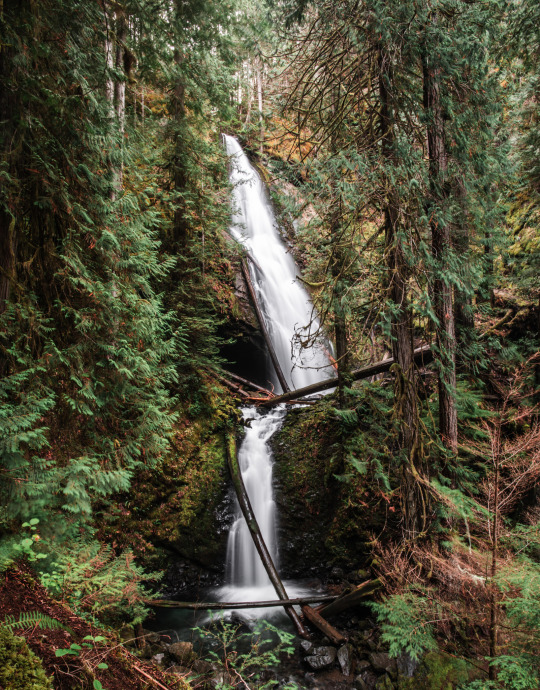
Murhut Falls | Jefferson County, WA
#artists on tumblr#original photographers#original photography#pnw#washington#nikon#nature#pacific northwest#hiking#murhut falls#waterfall#landscape#moody landscape#trees#forest#moss#jefferson county#olympic peninsula
356 notes
·
View notes
Text

Ruby Beach, WA
#.img#my photography#ruby beach#northwest washington#washington#coastal highway#hwy101#highway 101#washington state#pacific nw#pacific ocean#beach#ocean#waves#trees#forest#olympic national park#olympic national forest#nature#jefferson county#jefferson county wa#jefferson county washington#pacific northwest#pnw#pnwcore#pnwexplored#pacific northwest coast#coast#west coast#pacific coast
67 notes
·
View notes
Text
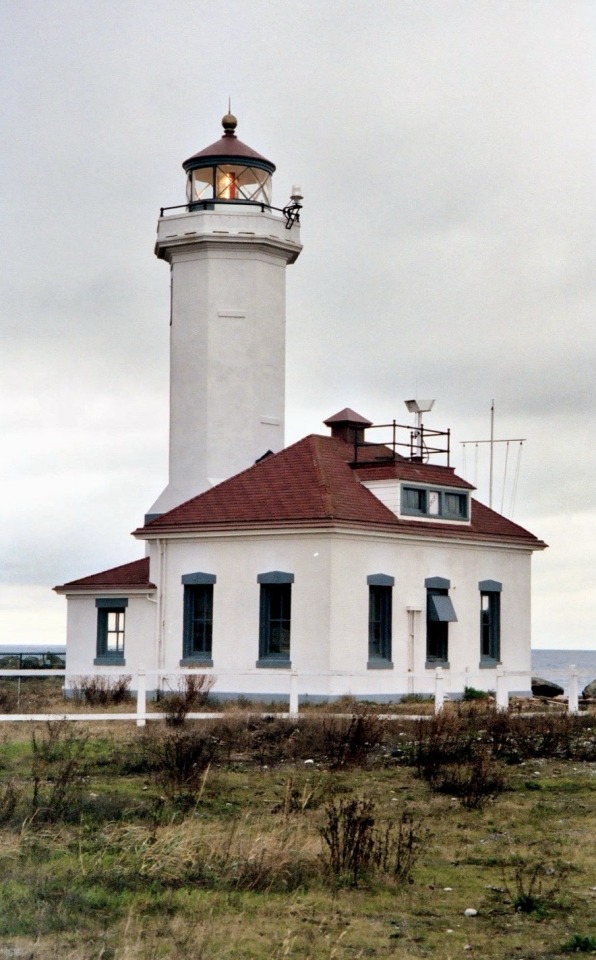
Point Wilson Lighthouse, Port Townsend, Washington, 2004.
#lighthouse#point wilson#port townsend#jefferson county#washington state#2004#photographers on tumblr#pnw#pacific northwest
6 notes
·
View notes
Text

3 notes
·
View notes
Text

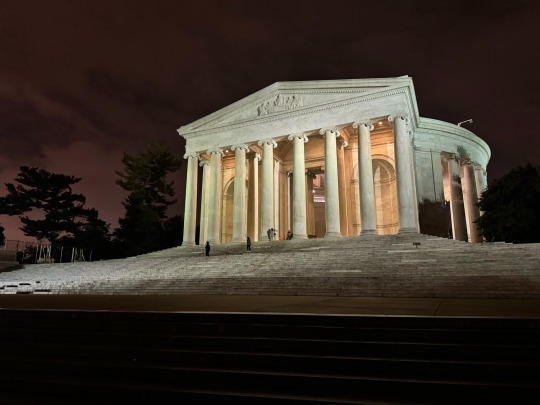


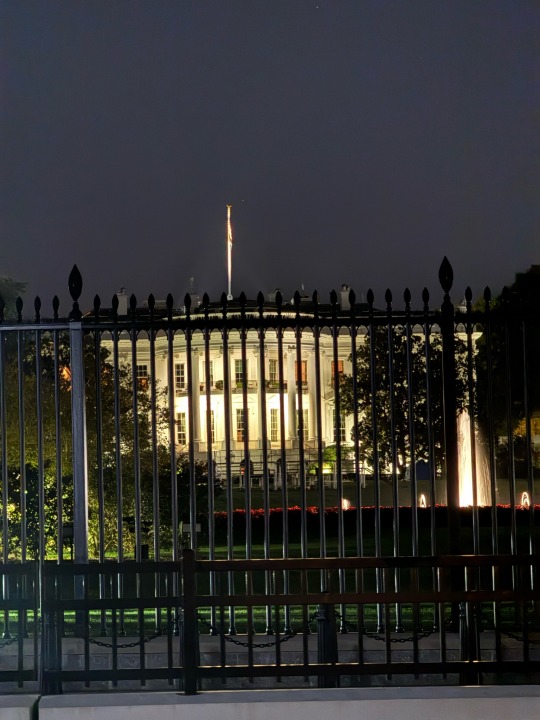


The National Mall in Washington, DC is so beautiful at night!
#washington#washington dc#lincoln memorial#jefferson memorial#washington monument#ericruchensky#eric ruchensky#attorney#flagstaff#arizona#coconino county#lawyer#outdoors#cityscape#city at night#city aesthetic#night sky#nighttime#capitol#capital#national mall
4 notes
·
View notes
Video
Cat by charlee955
Via Flickr:
George Washington National Forest, Virginia
#Virginia#George Washington and Jefferson National Forests#George Washington National Forest#Crabtree Falls#Nelson County#Fall#Autumn#Fall Foliage#Crabtree Falls Trail#Cat#flickr
3 notes
·
View notes
Text
"An officer of the Revolution": The story of Mountjoy Bayly [Part 3]
Continued from part 2
Did Mountjoy live in Washington County, Maryland?
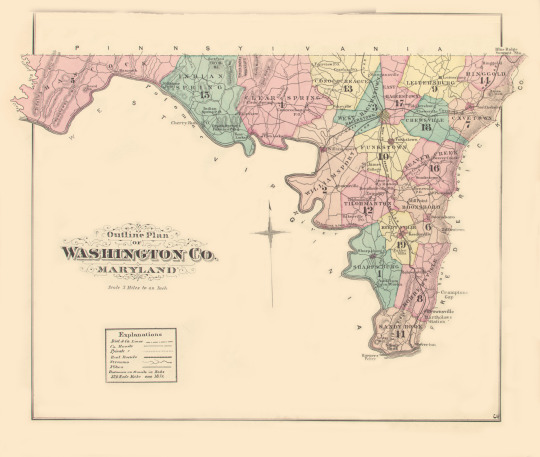
1877 map of Washington County. Courtesy of Johns Hopkins Sheridan Libraries.
Existing records show a "Mountjoy Bayly" of Washington County, described as released and no longer and insolent debtor, giving Samuel Bayly, Trustee to benefit the creditors, all the property, real and personal and mixed. [36] It further says that this individuals took all his bedding with him, and makes clear this transaction refers to Washington County in Western Maryland, not the short-lived Washington County within the District of Columbia where Maryland jurisdiction still applied at the time. It is worth noting that in 1774, Mountjoy was an overseer for his older brother named Samuel Bayly who was living in Colchester, Virginia. [37] Hence, one could make the argument that this Bayly is the same as Mountjoy we were talking about.
Reprinted from my History Hermann WordPress blog.
Further records, show this "Bayly" as living in Washington County, is an insolent debtors and a "petition from Mountjoy Bayly, of Washington county, praying an act of insolvency, was preferred, read, and referred to the committee appointed on petitions of a similar nature" in 1805. It also worth noting there is a Chancery Court case involving Washington County, specifically the "Insolvent estate of Bayly" at Clift Springs, a land tract seemingly within the county, which is apparently mentioned in this book. There is one entry for a "Clift Spring" owned Philip Barton Key in the 1790s, but it not known if this is the same property. [38]
In the agreement between this "Mountjoy Bayly" and Samuel Bayly, the following signature is given:

In Mountjoy's letters to Jefferson, the following signatures are given:

The top signature is from his 1803 letter, the second is from his 1804 letter.
In the land agreements by Mountjoy from 1800 to 1803, the following signatures are given [39]:
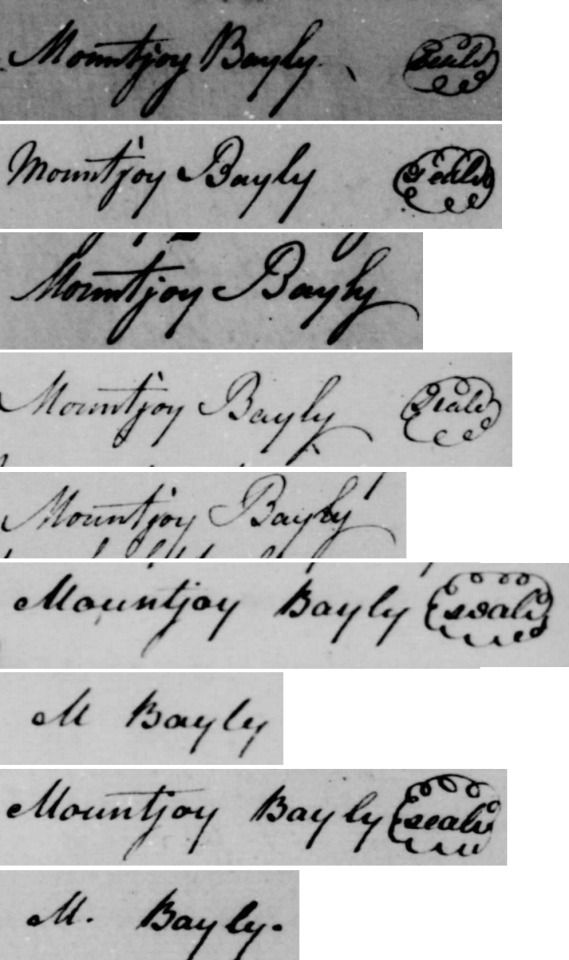
From this, I conclude that the "Bayly" of Washington County, Maryland is a different person. In every single one of these signatures, except one, the letter M has a down curl. While he did write his name as "M Bayly" on several occasions, none of the signatures looked like that in the 1808 letter, which seems much neater. The fact that he did not live in this county is also reaffirmed by the letters he sent to Jefferson in 1803 and 1804 which were sent from "Georgetown," a town within the District of Columbia. Also, the idea of him becoming an insolent debtor and giving up all of his property to creditors seems unlikely since no land records before this time indicate any sort of financial troubles. Still, some could see indicators it is Mountjoy. Ultimately, the only way to solve this dilemma once and for all would be to look at the Chancery Court case mentioned earlier, which is a case relating to the 1808 letter. However, this cannot be done currently as I do not have access to such resources. But, hopefully other researchers and interested persons can fill in this gap in the future.
© 2016-2023 Burkely Hermann. All rights reserved.
#washington county maryland#maryland#maryland history#landowners#mysteries#1800s#signatures#thomas jefferson#thomas jeffershit
0 notes
Text
Got a wild one here for ya Nunny.
Submitted anonymously.
Oh fun, we got rage against the white saviors hitting now then?
::::::Obligatory "white man's burden" reference here::::::
__________________
From coast to coast, wokeness is facing a rebellion.
Communities are fighting to reclaim their local heritage after a cancel-culture rampage in recent years eviscerated Native American images, nicknames and tributes at hundreds of schools nationwide.
"We’re actually fighting an anti-American movement," Lisa Davis, a pro-Native American activist in Cedar City, Utah, told Fox News Digital.
"The people trying to erase Native American culture are the same people trying to remove Thomas Jefferson and bashing American heritage."
Davis and other Cedar City residents formed the grassroots organization VOICE (Voices of Iron County Education) after the school board voted to eliminate the high school’s traditional Redmen name and logo in 2019.
"It was an honor to be called the Redmen," Julia Casuse, a "full-blooded Navajo" and graduate of Cedar City High School, told Fox News Digital.
The silversmith said she tells visitors at the family’s shop, Navajo Crafting Co., "I’m a Redmen through and through."
The school's nickname is now the Reds.
Yet the irony of the new name is not lost on Cedar City residents. "We went from honoring centuries of American and Native American history to honoring communism," said Davis.
"The people trying to erase Native American culture are the same people trying to remove Thomas Jefferson and bashing American heritage."
Eunice Davidson, a Dakota Sioux and president of the Native American Guardians Association (NAGA), told Fox News Digital, "It’s a terrible injustice to these communities,"
She and others claim the decisions to remove Native American images, nicknames and logos are made by local school boards, which are often under pressure from well-funded outside forces.
"The decisions never have popular support," said Davidson, whose organization is based in North Dakota.
"The taxpayer is being shunned and the school boards don’t care anymore. It’s Marxism and it’s taken over the school boards."
The grassroots group VOICE claims that 79% of local residents voted in support of the Redmen in a recent Change.org survey.
Battles all across the country
Communities around the nation are waging similar battles.
Activists in Killingly, Connecticut are fighting to reclaim the town's Redmen tradition after it was trampled by a statewide mandate to wipe out its own Native American legacy.
Cambridge, New York has taken its fight to save its beloved Indians tradition to the courts — after the Board of Regent announced its plan to trample Native American history across the Empire State.
Local residents recently voted two new pro-Native American candidates onto its school board, including Iroquois Dillon Honyoust.
"When you think about Native Americans, any icon that you see is about strength, honor, pride. Always a positive symbol to portray the strength of our heritage," Honyoust said in an interview with WAMC Northeast Public.
The school board in Southern York County, Pennsylvania voted in January to allow Susquehannock High School to bring back its traditional Warriors name and logo.
The decision came after five new school board members won elections in November by running on pro-Native American platforms.
"This movement was about erasing Native American culture and I wasn’t about to stand for it," Jennifer Henkel, a mother of three children and one of the new school board members, told Fox News Digital previously.
The powerful group National Congress of American Indians (NCAI), based in Washington, D.C. has led the effort to erase Native American images in local communities around the nation. The organization is funded by benefactors such as George Soros’ Open Society Foundations, along with taxpayer dollars.

Gonna clip it here, but it's wild (also not unexpected) to see things like this at the end of the piece
Students at Wellpinit (Washington) High School voted to keep the school's Redskins mascot in March 2023, rejecting calls to erase history and heritage by local Democrat leaders.
The student body is 87% Native American, according to the Department of Education.
So much of this stuff is the 'offended on your behalf' nonsense we've been seeing for decades.
Gotta wonder if this kind of thing continues to gain momentum if the "I" will get dropped from BIPOC.
The NCAI "has tracked the retirement of more than 200 unsanctioned Native ‘themed’ mascots since 2019, and has supported legislation banning the use of these mascots in multiple states," the group said in a statement last year to Fox News Digital.
The group is also largely responsible for the effort to force the NFL's franchise in Washington, D.C., to drop its traditional Redskins name and the familiar Native American face that appeared on the team's helmets.
"Widely consumed images of Native American stereotypes in commercial and educational environments slander, defame and vilify Native peoples," the NCAI claimed in a 2013 report that tilted public opinion against the Redskins and other Native American images.
The report, however, offered a dubious narrative. Among other omissions, the report's lengthy history of the Redskins failed to mention Blackfoot Chief John Two Guns White Calf — even though he served as the face of the franchise for 48 years.
He was one of the most influential Native Americans of the 20th century. He fought for Native American causes and counted President Calvin Coolidge among his sphere of influence.
His proud facade appeared on Redskins helmets from 1972 until he was canceled in 2020. The NCAI scrubbed his name from its history of the franchise.
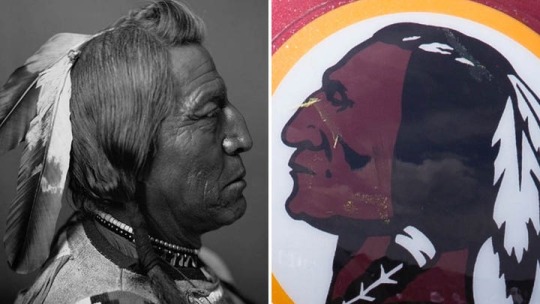
Fox News Digital reached out to the NCAI for further comment.
Communities across the nation, however, are fighting to preserve their Chief White Calf Redskins logo.
Voters in Sandusky, Michigan recalled three school board members who voted to eliminate the Redskins. They've since elected three new school board members who ran on promises to reclaim the Redskins.
Rick Spiegel, an activist in Sandusky who is leading the effort to reclaim the Redskins, said 2,100 registered voters in the town responded to a mail-in survey, with 90% supporting the traditional name.
A survey at the high school revealed that 74% of students, and 53% of teachers, supported the Redskins.
Even so, the Sandusky High School teams are now known as the Wolves.
"They're trying to erase or eradicate Native American history," said Spiegel.
The Michigan communities of Camden, Pawpaw and Port Huron, he said, are fighting similar battles to preserve local traditions.
The Red Mesa (Arizona) High School Redskins installed a new football field last year with a Redskins logo splashed across the 50-yard line.
Students at Wellpinit (Washington) High School voted to keep the school's Redskins mascot in March 2023, rejecting calls to erase history and heritage by local Democrat leaders.
The student body is 87% Native American, according to the Department of Education.
Kingston (Oklahoma) High School is also a majority Native American school that embraces the Redskins.
"The people that I’ve talked to — they have a sense of pride about our name, and about our mascot being the Redskins," Kingston athletic director Taylor Wiebener told KXII.com in 2020.
Students and residents of Donna, Texas, and McCloud, Oklahoma, have repeatedly voiced support for their Redskins identity, despite constant pressure, according to Native American activist Andre Billeaudeaux.
Casuse, the Navajo alumna of Cedar City High School in Utah, claims her allegiance to the Redmen began when she arrived at the school from a Navajo reservation in New Mexico in the 1960s.
She was feeling homesick while attending her first home football game.
"It gave me a sense of honor … It was a proud feeling for me, a sense of my heritage."
"All of a sudden I heard a very strong native beat. The school song," she said. "It stopped me in my tracks. It was wonderful hearing that sound and the beautiful Native music."
She suddenly felt at home, she said, adding that she served as a member of the pep club throughout high school.
"It gave me a sense of honor. I was never embarrassed about it, never felt any tinge of prejudice. It was a proud feeling for me, a sense of my heritage."

81 notes
·
View notes
Text
Haunted States of America: Oregon
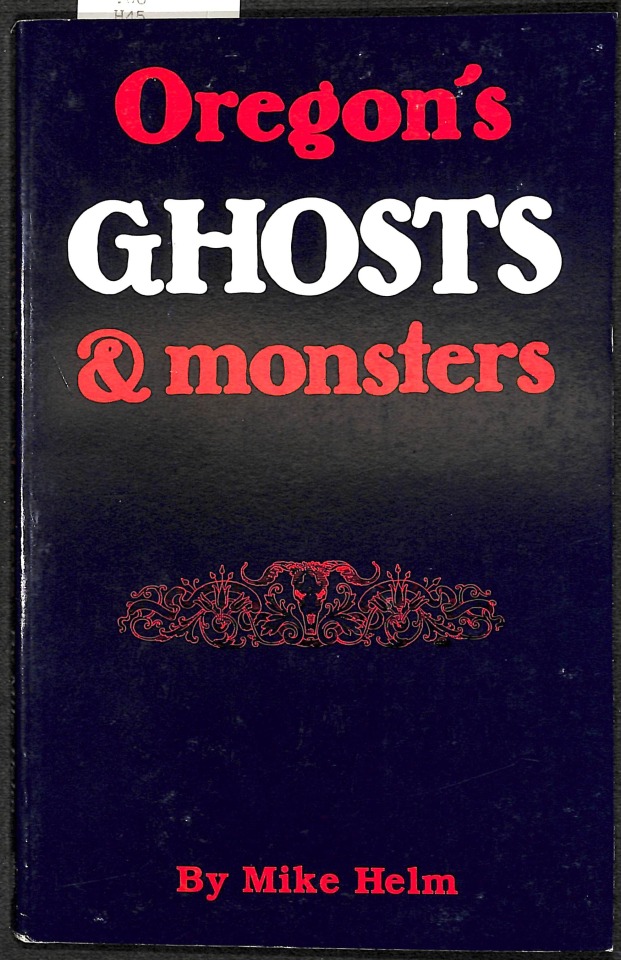
Oregon's Ghosts & Monsters (1983) by Mike Helm
In Wallowa County they talk about a monster "as long as a rowboat" with "a head like a hog's head", and "eyes about 14 inches apart", that lives in Wallowa Lake. Near La Grande, in an old hotel, a piano plays and a woman screams in the night--but, except for the listener, the hotel is empty. In the attic of a lovely old house on Heceta Head, just above the pounding Pacific, Rue, an old lady in an old-fashioned dress, floats, legless, toward a terrified workman. Near Albany, a tall, shaggy creature rises from a swamp and lopes down the road beside a mint truck, peering curiously through the driver's window, and staying alongside the truck at speeds up to 35 miles per hour.
These are ghosts and monsters in Oregon, and this is a collection of stories about them.
Other books about ghosts and creatures in Oregon include:
Ghosts and Strange Critters of Washington and Oregon (1999) by Jefferson Davis
Ghost Stories of Oregon (2001) by Susan Smitten
The Browne Popular Culture Library (BPCL), founded in 1969, is the most comprehensive archive of its kind in the United States. Our focus and mission is to acquire and preserve research materials on American Popular Culture (post 1876) for curricular and research use. Visit our website at https://www.bgsu.edu/library/pcl.html.
42 notes
·
View notes
Text
I may not like conservative news sites but at least they are willing to report on crap like this instead of bowing to the TQ+ cult
An 11-year-old little girl was assigned to share a bed with a male student who identifies as a girl while on a cross-country school trip, according to a demand letter sent Monday. That girl's parents are now calling upon the public school system to provide answers and clarification of its policies related to children who identify as transgender.
FIRST ON THE DAILY SIGNAL: An 11-year-old girl was assigned to share a bed with a male student who identifies as a transgender girl while on a cross-country school trip, according to a demand letter sent Monday. That girl’s parents are now calling upon the public school system to provide answers and clarification of its policies related to children who identify as transgender.
Represented by Alliance Defending Freedom, Joe and Serena Wailes are calling on the Colorado-based Jefferson County School Board usaand Jefferson County Public Schools Superintendent Tracy Dorland to clarify “whether JCPS will continue this practice of intentionally withholding information about rooming accommodations from parents like the Waileses, who object to their children rooming with a student of the opposite sex, regardless of the other student’s gender identity.”
“This practice renders it impossible for these parents to make informed decisions about their children’s privacy, upbringing, and participation in school-sponsored programs,” reads the demand letter, which was exclusively provided to The Daily Signal. “Additionally, our clients request information related to JB R-1 and the ability to opt out of this rooming policy for all future school trips.”
The Waileses describe how their daughter, who is in fifth grade, went on a JCPS-sponsored trip to Philadelphia and Washington, D.C., in June 2023. JCPS had repeatedly told parents that the boys and girls on the trip would be roomed on different floors—and chaperones told the students that boys would not even be allowed to visit the girls’ floor, as well as vice versa, according to the letter.
Serena Wailes also went on the trip, though she was not a chaperone.
The Wailes’ 11-year-old daughter, who is identified in the letter as “D.W.,” was assigned to a room with three other students, according to the demand letter. Two of these students were girls from her school, and the third student was a boy who identified as a girl (named in the letter as “K.E.M.”) who went to a different school.
D.W. and K.E.M were told that they would share a bed, and that evening, when the students were in their room together, K.E.M. reportedly revealed to the girls that he is a boy who identified as a girl.
“We were definitely not aware of that before we went on the trip,” Serena Wailes told The Daily Signal in a phone interview. The mother shared that this young boy was presenting as a girl, wearing girls’ clothing, and had longer hair.
Uncomfortable at the thought of sharing both a room and her bed with a boy, D.W. snuck into the bathroom and called her mother. Then she went downstairs and met her mom in the lobby to discuss the matter.
Serena Wailes told The Daily Signal that her daughter was “terrified and really upset about the idea of sharing a bed with a biological boy—even though she had a good relationship with this other student.”
“I was really upset,” Serena Wailes told The Daily Signal. “One, I was really upset that she was put in that situation at 11 years old—I don’t feel that is fair to put kids in that kind of situation—and two, that we were not even given the information that this was a possibility before the trip. The whole time they’re saying, ‘Girls on one floor, boys on another, they’re not going to be in each other’s rooms unless it is pre-approved.’ So we’re going through this whole process, not even recognizing that this is a possibility.”
Joe Wailes said that his wife called him from the hotel and filled him in about the situation.
“I felt a bit helpless,” he said. “I was 2,000 miles away. My daughter is scared in a bathroom trying to get herself out of a situation. It was a frustrating experience, and I just really felt like it was not a situation my daughter should be put in.”

School chaperones called one of the trip leaders, Principal Ryan Lucas, who called the boy’s parents, according to the letter: “K.E.M.’s parents confirmed their child’s transgender gender identity and that K.E.M. was to be in ‘stealth mode,’ meaning students on the trip would not know about their child’s transgender status.”
After a good deal of trouble, chaperones finally agreed to move the male student, with a different female student, to another room.
“Throughout the entire evening, K.E.M.’s privacy and feelings were always the primary concern of JCPS employees,” the letter said. “After JCPS disregarded D.W.’s privacy and the Waileses’ parental rights, JCPS then silenced D.W., thus infringing on her freedom of speech, when a JCPS teacher told the three girls that they were not allowed to tell anyone that K.E.M. was transgender, even though K.E.M. voluntarily chose to share this information.”
According to the demand letter, the school district’s policy is, “in most cases,” to room students based on the gender they identify as, rather than their sex.
The Wailes parents have two fourth-grade children registered to attend a trip to New York, Washington, and Philadelphia in 2024, and they emphasize in their letter that the district must clarify its policies for room assignments for students, as well as parental ability to opt their children out of sharing rooms with children of the opposite sex.
“They want to make sure that every parent knows that this is a possibility and can have the opportunity to opt out or make the best decision for their kid,” Kate Anderson, director of the Center for Parental Rights at Alliance Defending Freedom, told The Daily Signal. “But they also have two younger children that they want to make sure are not in the same situation that their older daughter was in.”
#The school agreed to let the boy go stealth in other words lie#So glad the parents believed her#Some parents would just tell her that wouldn’t happen#usa#Colorado#Jefferson County School Board#Not only were three girls assigned a room with a male it was with a male from another school#The boys parents wanted their kid in stealth mode but he told the girls his sex when they were alone
35 notes
·
View notes
Text
The Feuding Presidents of Westmoreland County, Virginia

Of all the Founding Fathers, it would seem like George Washington and James Monroe would have been the closest comrades. The two men were born just miles apart from one another in Westmoreland County, Virginia. They both were large men physically, not known primarily for their intellect, but instead for their hard work, their courage, and their devotion to the Revolutionary cause. They were the two Presidents who saw the most action during the Revolutionary War and Monroe served bravely under Washington. To top it all off, Washington and Monroe kind of looked like each other, too.
On Christmas Day in 1776, Lieutenant James Monroe was one of those legendary soldiers who famously crossed the frigid Delaware River with General George Washington to engage the British at the Battle of Trenton. Monroe led a charge in that battle to help capture some cannons that were about to be fired upon the Americans and was wounded in the shoulder, a severe injury that would have resulted in him bleeding to death if it weren’t for the fortunate presence of a local doctor in New Jersey. Monroe’s heroism led to a promotion as Captain and he continued serving bravely during the war and was amongst those troops who survived the terrible winter of 1777-1778 at Valley Forge. It would seem as if none of the Presidents could have established more of a bond than the two Virginians who helped fight in the Revolution. Indeed, General Washington wrote that Monroe “has, in every instance, maintained the reputation of a brave, active, and sensible officer.”
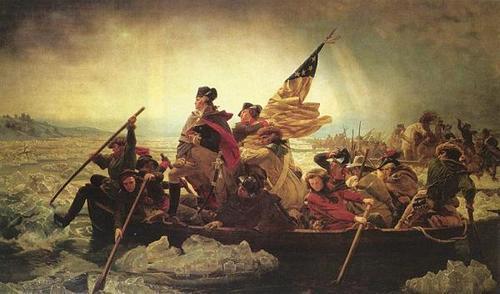
So why did they despise each other? And did James Monroe indirectly help kill George Washington?
After the Revolution, Monroe entered politics and supported the national government being formed under George Washington despite the fact that Monroe had voted against the ratification of the Constitution in 1788. As one of Virginia’s first U.S. Senators, Monroe continued his support of Washington, who was now President, but began to fear that too much power was being placed in the hands of the chief executive and found himself opposing Washington’s Proclamation of Neutrality. When Washington appointed Monroe as Minister to France in 1794, something snapped.
Monroe, like his friend and mentor Thomas Jefferson, loved France. He loved the country itself and, as an American Revolutionary, he found himself in love with the French Revolution. President Washington’s Proclamation of Neutrality insisted on American impartiality towards France and the countries that France was at war with at the time – Britain, The Netherlands, Austria, Prussia, and Sardinia. Monroe was vehemently opposed to neutrality because the French were the first and most important allies of the United States during the Revolution. Plus, James Monroe loved France. In fact, Monroe loved France so much that Secretary of State Edmund Randolph was forced to officially reprimand him due to his glowing compliments about France when Monroe presented his credentials in Paris.
From there, things continued going downhill between Washington and Monroe. Monroe rescued Thomas Paine – another one of America’s early Revolutionaries — who had been thrown into prison in France for criticizing the execution of Louis XVI. Paine was very sick and believed to be close to death, so after securing his release, Monroe arranged for Paine to stay with him at the American Ministerial residence. Paine recovered and proceeded to brutally attack George Washington verbally for allowing him to rot in prison instead of rescuing him as Monroe did. President Washington felt Monroe should have muzzled Paine, or at least repudiated Paine’s disrespectful language towards Washington.
When the United States signed Jay’s Treaty with Great Britain, easing tensions between the U.S. and it’s former colonial power, Washington expected Monroe to be a good Federalist and support the rather unpopular treaty. Monroe opposed it and refused to speak out in support of the treaty. His silence on Jay’s Treaty was the last straw for Washington. The President was furious and noting that he expected a diplomat who would “promote, not thwart, the neutral policy of the Government” recalled Monroe as Minister and ordered him to return to the United States. When Monroe learned of his recall, he said that Washington was “insane”.
Over the next few years, Monroe spent his time at home in Virginia and worked to undermine Washington and criticize the first President. Monroe questioned Washington’s capacity as a leader and felt that he had sold out the French, who had done so much to help the Americans during the Revolutionary War. Washington felt that Monroe was unqualified to critique his Presidency and that Monroe was a hopeless Francophile. In 1797, long before Monroe was considered to be Presidential timber, Washington cautioned, “If Mr. Monroe should ever fill the Chair of Government he may (and it is presumed he would be well enough disposed) let the French Minister frame his speeches”. Washington added, “There is abundant evidence of his being a mere tool in the hands of the French government.”
Monroe wasn’t ready for the “Chair of Government” on a national level, but after Washington retired to Mount Vernon and handed the Presidency over to John Adams, Monroe decided to aim for the “Chair of Government” on a state level. In 1799, Monroe campaigned to become Governor of Virginia and as Monroe’s candidacy was promoted by his friends and supporters, 67-year-old George Washington maintained his estate in Virginia in retirement and tried to do whatever he could to prevent Monroe’s rise. If Monroe was going to be Governor of Washington’s beloved Virginia, then it would practically have to happen over Washington’s dead body.
Washington wasn’t powerful enough to prevent Virginia’s state legislature from electing Monroe as Governor in December 1799, however. On a cold and snowy day, George Washington learned of his former lieutenant’s victory and took off on horseback to tend to Mount Vernon. When Washington returned to his home, cold and soaking wet, he got into an animated discussion with guests about Monroe’s victory and angrily denounced the newly elected Governor. Washington continued his discussions without removing his wet clothing. Already ill with a cold, Washington’s illness worsened. On December 14, 1799, George Washington said his last words, “Tis well” and died.
Monroe continued his public service as Governor of Virginia, a special envoy to France to secure the Louisiana Purchase for Thomas Jefferson, Minister to Great Britain, Governor of Virginia once again, and Secretary of State and Secretary of War under his close friend James Madison. In 1817, it was finally Monroe’s turn to take the “Chair of Government” as Washington had so feared. Supported by Jefferson and Madison, Monroe easily defeated Rufus King and became President, kicking off “The Era of Good Feelings” where Monroe’s popularity was almost unparalleled by any other President and the nation was unified and free of almost any partisan bickering.
In 1820, Monroe ran for re-election and was so enormously popular that no one dared to run against him. In Massachusetts, 85-year-old John Adams -- a stalwart Federalist and George Washington's Vice President -- even supported Monroe. Yet Washington got the last laugh. Running unopposed, Monroe was not only certain of victory, but it looked like he would become the only President besides Washington be elected unanimously by the Electoral College. However, Governor William Plumer of New Hampshire decided to deny Monroe that honor and reserve it for Washington and Washington only. Some stories allege that Plumer did it solely to prevent Monroe from joining Washington as unanimous Electoral College victors and some stories note that Plumer truly disliked President Monroe and voted for John Quincy Adams as a protest. Either way, the records will always show that George Washington was the only President elected unanimously and I think it's pretty clear that Washington would have appreciated that Monroe of all people was prevented from joining him in that exclusive club.
#History#Presidents#George Washington#President Washington#General Washington#James Monroe#President Monroe#Death of George Washington#Virginia#Virginia Presidents#Westmoreland County#1820 Election#American Revolution#Revolutionary War#Crossing the Delaware#Washington Crossing the Delaware#Washington's Crossing of the Delaware#Battle of Trenton#Continental Army#Military History#Presidential Rivals#Politics#Presidential Politics#Presidential Relationships#Presidential Feuds#Federalist Party#Proclamation of Neutrality#France#French Revolution#Thomas Paine
34 notes
·
View notes
Text
16 Black Innovators Who Changed Food Forever
Macaroni and cheese. Ice cream. French fries. Jack Daniel's whisky. Frozen foods in general.
We wouldn't have any of the above foods, plus many others, were it not for Black food innovators and figureheads that have made significant contributions and altered the way we eat and make food today.
Below are just some of the stories of these incredibly talented and inspiring individuals. Some of these names came from research via the New York Times and Food and Wine, but we've also included historical sourcing and context for each person as well. You can click on their names to view those original pieces.
Nathan "Nearest" Green
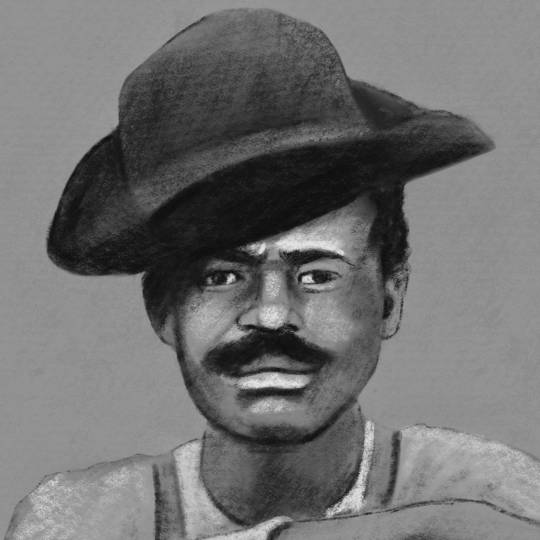
Known as "Uncle Nearest," Nathan Green was a skilled distiller who mastered the "Lincoln County" process. This method of distilling is thought by food historians and whiskey experts alike to have been brought in by slaves, and uses charcoal to filter and purify foods. The "Lincoln County" process, in particular, uses sugar maple charcoal to filter bourbon.
Green trained hired hand Jasper Newton Daniel (known to the world as "Jack Daniel") while working on a priest's distillery in Lynchburg, Tennessee. Daniel eventually made him the first master distiller of Jack Daniel's, the famous Tennessee whisky many people drink today.
While Jack Daniel's shares the story of Green on their website, an all minority-led whisky brand named "Uncle Nearest" continues to build upon his legacy with spirits that use the same distilling technique, but feature Green's name on the bottle.
youtube
While Thomas Jefferson is sometimes credited with bringing foods like mac & cheese and ice cream to the United States, Hemings was the one who actually learned to make them. A slave in the ownership of Jefferson prior to his presidency, Hemings traveled with him to France in 1784 specifically to learn the art of French cuisine.
Hemings became the first American trained as a French chef in history as a result, bringing back several dishes to the United States. French fries, ice cream, macaroni and cheese, creme brulee, French meringues, and French whipped cream are just a few examples. These dishes and others would be incorporated in Hemings' signature half-French, half-Virginian style of cooking he became renowned for.
Hemings would later also cook one of the most famous dinners in American history: the one between Thomas Jefferson and Alexander Hamilton that settled who would pay for the Revolutionary War and established Washington, D.C. as the United States' capital. He eventually was freed by Jefferson in 1796.
Zephyr Wright
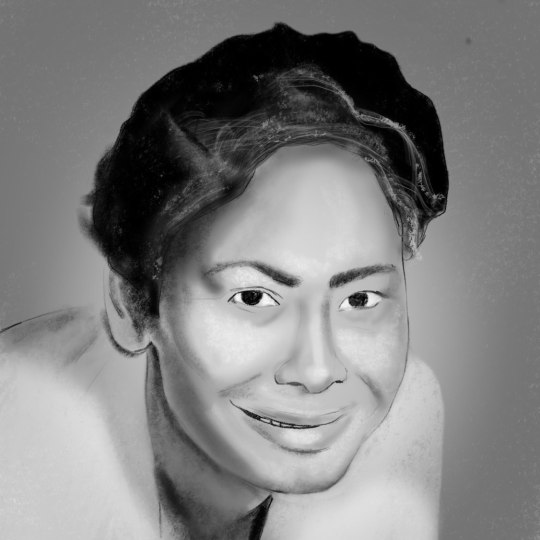
Zephyr Wright was the personal chef for President Lyndon B. Johnson and his family for over twenty years. It was her cooking that made the Johnson household a popular one for D.C. dinner parties.
Wright would follow Johnson to the White House during his tenure, and was in charge of the home cooking in the White House kitchen. She would also temporarily cook all meals, including VIP ones, in between the tenures of two White House Executive Chefs.
Wright is thought to have heavily influenced Johnson's support for the Civil Rights Act of 1964,. Wright was known to have spoken up to the President during his time in Congress about the injustices she faced road tripping between Texas and D.C. during congressional recesses, saying that she was not allowed to use the bathroom in areas she was driving through, and couldn't stop off and eat at restaurants. President Johnson reportedly used some of her stories to convince Congress to sign the bill. He would also give her a White House pen when the act was signed into law.
Leah Chase

The Queen of Creole Cuisine, Leah Chase was the heart and soul of Dooky Chase's restaurant in New Orleans across seven decades. Known for her fried chicken, red beans and rice, gumbo, and other classics, Chase started out in the 1940s when she got a job as a server at a restaurant. She eventually took over the helm and made it a safe haven for anyone to come and eat at.
Dooky Chase's was known as one of the few places that it was publicly okay for races to mix at, since the cops wouldn't bother activists inside the restaurant. Thus, leaders of the Civil Rights Movement, including local leaders and national ones like Martin Luther King Jr., would often strategize while eating there.
Chase would go on to serve presidents like Barack Obama and George W. Bush, along with Associate Supreme Court Justice Thurgood Marshall and other influential figures. Disney has even made a movie with a character inspired by her: Princess Tiana of Princess and the Frog.
Abby Fisher
Around the early 1880s, Abby Fisher was known for her award-winning pickles and the Mrs. Abby Fisher Pickle Company in San Francisco. She had at least 35 years of cooking experience, some estimates had it, and the awards she won for her food reflected that.
However, Fisher is probably best known for publishing one of the first cookbooks ever authored by an African-American woman. The book, called What Mrs. Fisher Knows About Old Southern Cooking, contains over 160 recipes and uses the dictated words of Fisher herself.
The cookbook surged in popularity in the late 20th century when a publisher began reprinting it in 1995. Today, it offers a window into these early recipes that places like museums try to recreate for guests to sample.
Edna Lewis

Edna Lewis became a legend while she cooked at Cafe Nicholson in Midtown Manhattan starting in 1949. Her fame and Southern recipes led to guests like Marlon Brando, Eleanor Roosevelt, and Salvador Dali showing up for dinner. After stepping away from the chef's role (as an active partner) in 1952, she would lecture at the American Museum of Natural History while working as a chef and private caterer.
Lewis would later become inspired to write her first cookbook as demand for them grew in 1972. She was one of the first African-American women from the South that would publish a cookbook that did not hide her name, gender, or race. She would go on to publish more in the future, eventually becoming known as the Grand Dame and Grand Doyenne of Southern cooking.
Larry James and Jereline Bethune
The Bethune family, to this day, runs Brenda's Bar-Be-Que Pit in Montgomery, Alabama. Open since 1942, the restaurant would become an important hub for those in the Civil Rights Movement.
After Rosa Parks infamously refused to give up her seat on a Montgomery bus, Larry James and Jereline Bethune were instrumental in using their restaurant to organize bus boycott efforts around the city. As the movement continued and literacy test laws (meant to curtail the Black vote) were introduced, Jereline would also quietly hold lessons teaching other African-Americans how to read. They were then able to pass these literacy tests and go out and vote.
Alfred L. Cralle
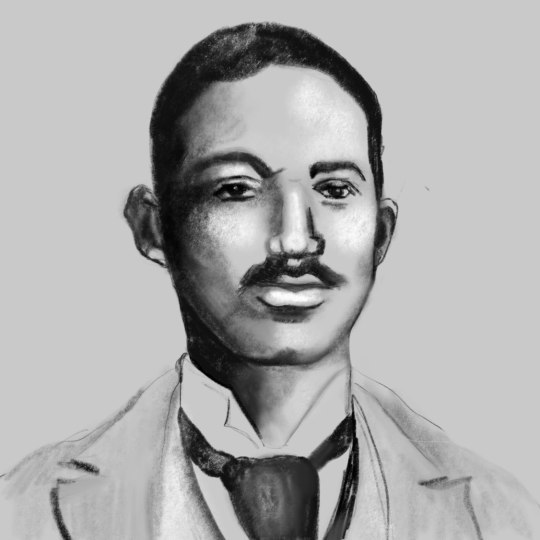
Ice cream today would not be the same without the work of Alfred Cralle. Born just after the Civil War, he had an affinity for mechanics as a young age, and would go study at Wayland Seminary, a school set up after the Civil War to educate newly freed African-Americans.
Cralle would go on to work as a porter at a drugstore and a hotel in Philadelphia, and developed the idea of the ice cream scoop while watching people struggle using two different spoons to get the ice cream into cones. Cralle's mechanical inventional, which is the basis of how ice cream scoops work to this day, was invented in 1897.
Cralle would also become a successful promoter of businesses in Philly, and was the assistant manager of the Afro-American Financial, Accumulating, Merchandise, and Business Association in Pittsburgh.
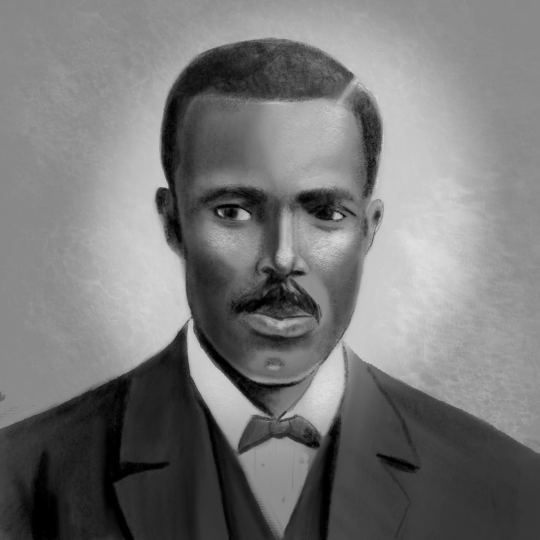
Ever heard the story of how potato chips were invented to spite a customer at a restaurant? George Crum was the chef at said restaurant, the Moon Lake Lodge resort in Saratoga Springs. A customer came in around the summer of 1853 wanting extra-thin French Fries, frustrating Crum to the point he sliced them as thin as possible, fried them in grease, and sent them out.
The chips became a big hit, eventually becoming known as "Saratoga Chips." While Crum never patented the dish, he did open his own restaurant, "Crumbs House," that served a basket of them at every table.
Chips wouldn't become a grocery product until 1895, and the concept of bagged chips didn't show up until 1926.

Joseph Lee was one of the most influential people when it came to industrializing the way we make bread.
Having worked in a bakery from a young age, Lee eventually became the owner of two restaurants in Boston, as well as a hotel and a catering company. Looking to find a way to minimize bread waste, he eventually invented a machine that would convert day-old bread into breadcrumbs. Patented in 1895, he later sold the rights and the breadcrumb maker would spread across the world.
That wasn't Lee's only invention, however. He would later patent the idea for an automatic bread maker that mixed and kneaded the dough, the basis to the same devices (think, stand mixers) that we still use in our kitchens today.
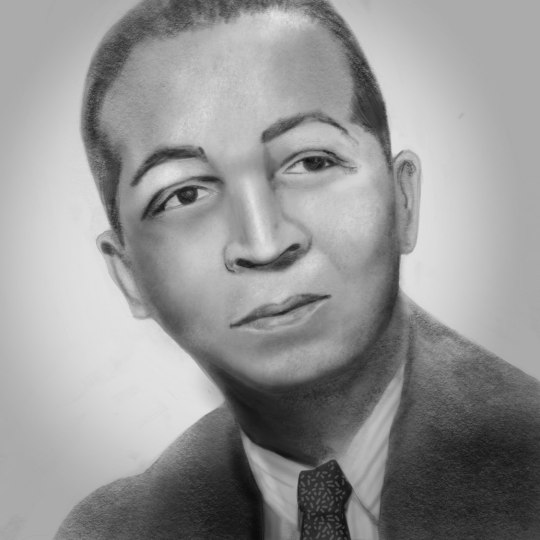
Lloyd Hall is considered to be one of the pioneers in the world of food chemistry. A pharmaceutical chemist for Griffith Laboratories in Chicago who completed graduate school, Hall would be awarded over 100 patents and received multiple honorary doctorate degrees for his work.
Hall's main area of work came around the development of techniques to preserve food. Some of his most revolutionary patents included using "flash-dried" salt crystals that revolutionized meatpacking. He also introduced the use of antioxidants to prevent the spoilage of fats and oils in baked goods, and developed a process known as "Ethylene Oxide Vacugas," which could control the growth of bacteria and molds in food.
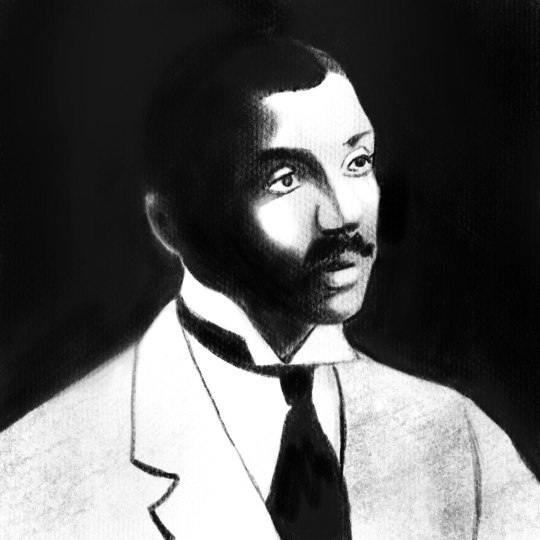
John Standard was an inventor instrumental in modernizing two pieces of kitchen equipment that virtually every household has today: stoves and refrigerators.
Refrigeration was a concept that was being researched as early as the 1830s, but mainly focused on using some sort of power. Standard's improvement to the fridge, patented in 1891, was an unpowered design that used a manually filled ice chamber as the central cooling unit.
Standard also made significant upgrades to the oil-powered stove, patenting one with a space-saving design in 1889 that could be used in applications like buffet-style meals on trains.

If you've worked in the food industry or any commercial transportation that required keeping stuff cold, you've likely seen the Thermo King brand somewhere in your lifetime. Frederick McKinley Jones was the founder of that company, and inventor of the first automated refrigerated system for trucks.
A skilled and gifted electrician and mechanic, Jones had patents for sixty different inventions across a wide variety of fields, including the portable X-ray machine, motion picture devices, and even medical storage units.
He's most known for the Thermo King, the refrigerated system he invented, because it allowed for fresh goods from around the world to be transported and sold in stores. Jones is essentially responsible for not just all refrigerated transport globally, but also the entire frozen food industry.

Known as the "Oyster King of New York," Downing was most known for his 19th-century restaurant, Thomas Downing's Oyster House. His oyster hall was legendary, with prominent figures like Queen Victoria and Charles Dickens having dined there.
Downing was born a free man, as his parents were freed by plantation owner John Downing. He grew up and was educated on Chincoteague Island in Virginia, and eventually made his way up to New York following the war of 1812. Like many other African-Americans in New York, Downing eventually went into the oyster business, opening his own oyster cellar in the 1820s.
Oyster cellars were the universal food of New York at the time (similar to hot dogs today), but many establishments weren't as trusted as Downing's. That's because he specifically catering it towards the fine dining clientele, with a large dining area, carpet, and chandeliers gracing the hall. Elaborate dishes like oyster-stuffed turkeys and a pan roast made with wine and chili graced the menu.
This, at the time, meant that African-Americans couldn't eat Downing's restaurant, but few were aware of the double life he led. Downing's basement was a key stop in the Underground Railroad, and as an abolitionist, he helped many that were escaping the South in search of freedom. He also led political efforts, funding schools for African-American children and leading the fight in desegregating New York's trolley system.
Downing was so regarded in New York that when he passed away in 1866, the New York City Chamber of Commerce closed so that its members could attend his funeral.
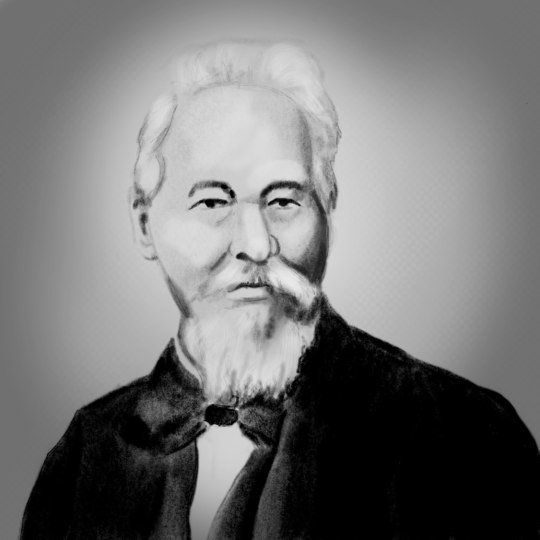
The sugar industry in the United States has Norbert Rillieux to thank for allowing them to become so powerful. Were it not for his inventions, making sugar would still be a time-consuming and dangerous process.
Originally, the sugar refinement process, known as "The Jamaica Train," was dangerous and expensive. Laborers (usually slaves) would transfer ladles of scalding hot sugar case juice between open boiling kettles, often resulting in scalding and terrible burns (anyone who's worked with sugar knows how painful it can be). The result was a dark syrup that was molded into cones and dried before being sold.
From 1834-1843, Rillieux developed a system for refining and crystallizing sugar using a much safer and controlled method, allowing the United States to eventually dominate the sugar market. His process is still used today for freeze-drying food, pigments, and other food products.
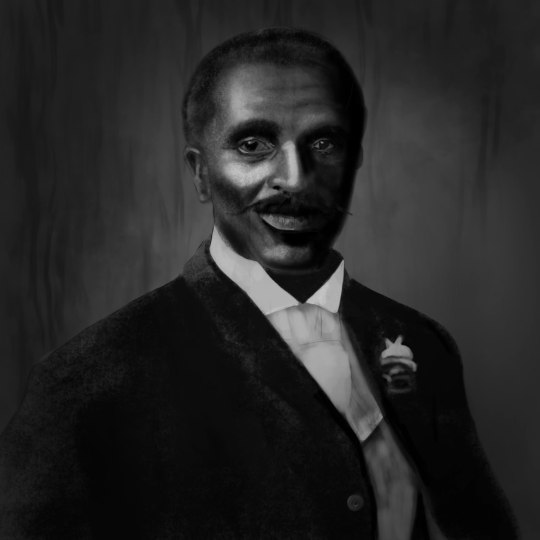
Many people know George Washington Carver for the myriad of products he invented that utilized peanuts or sweet potatoes. As an agricultural scientist working in the South, he was also a man responsible for helping revitalize much of the economy in that region.
Working out of the Tuskegee Institute in Alabama, Carver was a teacher and a researcher from the late 1890s until his passing in 1943. An early pioneer of crop rotation, he encouraged farmers to plant peanuts in the soil after harvest to replenish lost nutrients, helping farmers improve not just their livelihoods, but their diets as well.
Carver's research and work focused on revitalizing soil and maximizing plant production while keeping costs to a minimum. Outside of agriculture, he was a massive promoter of racial equality, and massive advocate of peanut oil as a potential treatment for polio. While never proven, the claim was widely circulated in media, and eventually turned into a "Peanuts for Polio" fundraising effort that helped raise money for medical care and benefits for children affected with the disease.
Following Carver's passing, then-Senator Harry S. Truman sponsored legislation that would lead to the construction of the George Washington Carver National Monument. It was the first-ever national memorial to an African-American.
#16 Black Innovators Who Changed Food Forever#Black Food#Black Food Innovaters#Food#Black Food Science#Black History#Black LIves Matter#Youtube
12 notes
·
View notes
Text




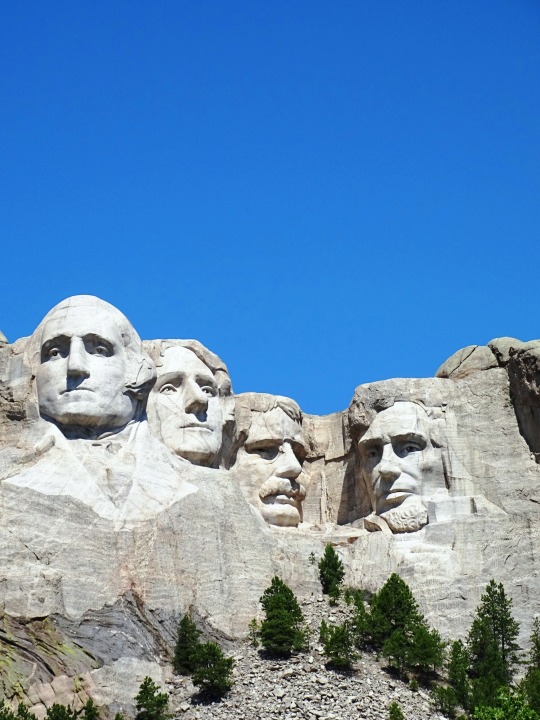







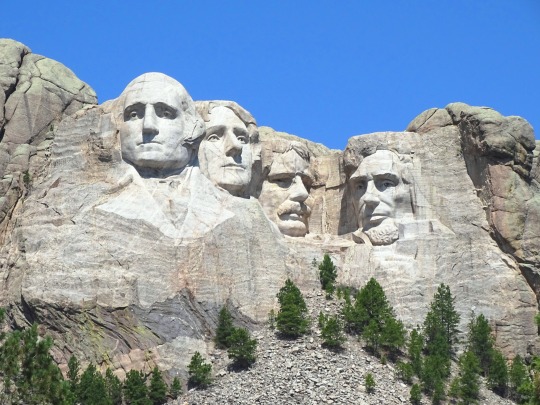
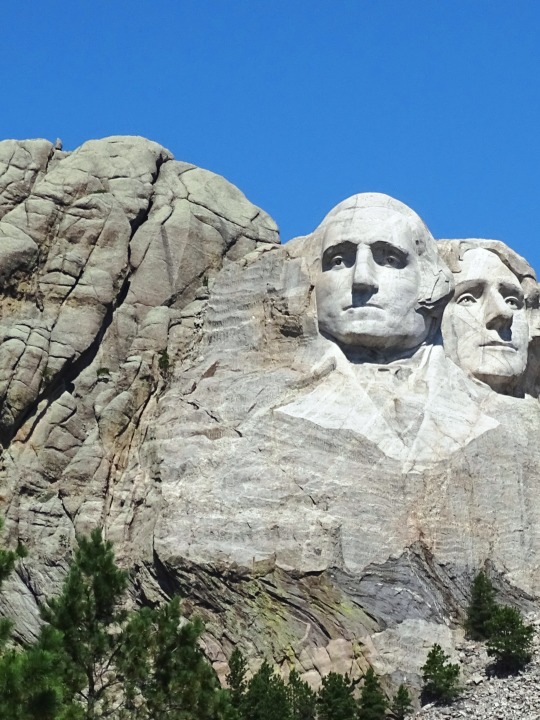
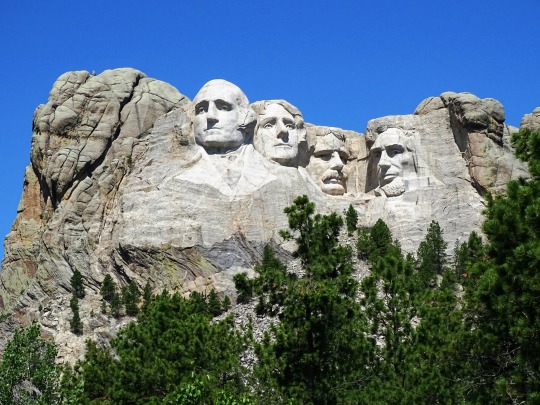
Thomas Jefferson Day
Thomas Jefferson, a founding father of the United States, was born on April 13, 1743. He held many roles and did much during the formative years of the country, including being the main author of the Declaration of Independence and the country’s third president. He wrote his own epitaph, highlighting what he most wanted to be remembered for: “HERE WAS BURIED THOMAS JEFFERSON AUTHOR OF THE DECLARATION OF AMERICAN INDEPENDENCE OF THE STATUTE OF VIRGINIA FOR RELIGIOUS FREEDOM AND FATHER OF THE UNIVERSITY OF VIRGINIA.”
Thomas Jefferson Day is a legal observance, but it is not a public holiday. A joint resolution approved on August 16, 1937, authorized the President of the United States to proclaim April 13 as “Thomas Jefferson’s Birthday” each year. The following year, President Franklin D. Roosevelt issued Presidential Proclamation 2276 to designate the day. Subsequent presidents have made similar proclamations. In Alabama, Thomas Jefferson’s birthday is officially celebrated on Presidents’ Day, along with George Washington’s.
Thomas Jefferson was born at the Shadwell plantation in Albemarle County, Virginia. His mother, Jane Randolph Jefferson, was from a prominent Virginia family, and his father, Peter Jefferson, was a planter and surveyor. After graduating from the College of William and Mary in 1762, he began studying law. As there weren’t official law schools at the time, Jefferson studied under a Virginia attorney. He began his work as a lawyer in 1767.
He married Martha Wayles Skelton on January 1, 1772. They had six children, but only two daughters lived to adulthood. Martha died in 1782 at the age of 33, and Jefferson never remarried. Besides keeping himself busy with politics throughout his life, he had many other interests, including gardening, architecture, music, and reading.
Jefferson was a member of colonial Virginia’s House of Burgesses between 1769 and 1775. He wrote “A Summary View of the Rights of British America” in 1774, which brought him to a wider audience. It said that the British Parliament didn’t have the right to use authority over the colonies. He was then selected to be a delegate to the Second Continental Congress. During this time, a panel of five was chosen to draft the Declaration of Independence. Of the five, which also included John Adams and Benjamin Franklin, Jefferson was chosen to write the draft. It was adopted on July 4, 1776.
In the fall of 1776, Jefferson resigned from the Continental Congress and was elected to the Virginia House of Delegates, which was formerly the House of Burgesses. In the late 1770s, he drafted the Virginia Statute for Religious Freedom. It was a notable forerunner to the First Amendment, and Jefferson thought it was one of his most substantial contributions, being important enough to include in his epitaph. After his time in the Virginia House of Delegates, he was Governor of Virginia from 1779 to 1781.
Following the Revolutionary War, Jefferson was part of Congress, which was known as the Congress of the Confederation at the time. He served from 1783 to 1784, and then became Minister to France in 1785, taking over the position that Benjamin Franklin had held. Because he was overseas, he was not able to attend the Constitutional Convention in 1787.
In the fall of 1789, Thomas Jefferson returned to America and became the first secretary of state. He helped found the Democratic-Republican Party, which opposed Alexander Hamilton’s Federalist Party, a party which wanted a strong central government with strong powers over the economy. Jefferson believed in a federal government with a limited role and believed in strong state and local governments.
He ran for president in 1796 and received the largest amount of votes after John Adams, so he became vice president. He ran against Adams again in 1800, and this time beat him. But his electoral vote count tied that of his running mate, Aaron Burr, and it was up to the House of Representatives to declare Jefferson as president. Because of this, the Twelfth Amendment, which stipulated separate voting for president and vice president, was ratified in 1804.
Jefferson served two terms as president and was in office from 1801 to 1809. During his first term, in 1803, he helped orchestrate the Louisiana Purchase, in which the size of the United States doubled with the purchase of land for $15 million from France. Jefferson sent Meriwether Lewis and William Clark on an expedition, known as the Corps of Discovery, to explore the new land. With this trip, information was gathered about geography, plant and animal life, and American Indian tribes. During his second term, which he secured with over 70% of the popular vote, Jefferson worked to keep the country out of the Napoleonic Wars. He implemented the Embargo of 1807 after merchant ships were getting harassed by France and Britain. It was an unpopular move, though, as it shut down American trade and hurt the economy; it was repealed in 1809. Jefferson did not run for a third term in 1808.
After his presidency, Jefferson retired to his home, Monticello. “Monticello” means “little mountain” in Italian. Indeed the home is located on a small mountain, on the edge of the Shadwell property where Jefferson was born. He had begun clearing the area for a home in 1768. He designed the home and gardens himself, and he continually worked on the house throughout his life. Art and gadgets filled the rooms, and he kept records of everything that went on at the plantation.
During his retirement years, he also helped found the University of Virginia. He helped design both its buildings and its curriculum. He also made sure it wasn’t a religious school and that there wasn’t a religious litmus test in order to attend it.
In 1815, he sold his 6,700 volume personal library to Congress, to replace the books that had been destroyed by the British in the War of 1812, when they burned the Capitol, which housed the Library of Congress at the time. Jefferson’s books became the foundation of what became the Library of Congress’s new library.
Although Jefferson is revered as one of the founding fathers, he is not a man without contradictions and shortcomings. He was a promoter of liberty and wrote “all men are created equal,” but was a slave owner throughout his whole life, during which he owned a total of about 600 slaves. He believed blacks were inferior humans and didn’t think coexistence would be possible if they were free. And although he never remarried after the loss of his beloved wife, Martha, he went on to father more children with one of his slaves, Sally Hemings. Some of the slaves that were in his bloodline were freed after his death, but most of his slaves were sold.
Thomas Jefferson passed away at Monticello at the age of 83, on July 4, 1826, on the 50th anniversary of the adoption of the Declaration of Independence. As if the date of his death wasn’t ironic enough, fellow founding father John Adams died on the same day. Thomas Jefferson died first, but Adams did not know that Jefferson had died, and his last words were “Thomas Jefferson survives.” Jefferson was buried at Monticello. Monticello was sold off following his death to pay debts, but a nonprofit organization acquired it in the twentieth century and it was opened to the public in 1954.
Source
#Thomas Jefferson Day#13 April 1743#anniversary#US history#born#birthday#Mount Rushmore National Memorial#controversial memorial#USA#controversy#Black Hills#South Dakota#Gutzon Borglum#summer 2019#original photography#tourist attraction#landmark#landscape#nature#NationalThomasJeffersonDay#Thomas Jefferson#US President#Teddy Roosevelt#Theodore Roosevelt#Abraham Lincoln#George Washington#North Central Region#Great Plains#travel#vacation
8 notes
·
View notes
Text

#pilophorus acicularis#pilophorus#mount townsend#jefferson county#washington#olympic peninsula#lichen
3 notes
·
View notes
Text
2024 New York Yankees Roster
Pitchers
#0 Marcus Stroman (Brookhaven, New York)*
#29 Clayton Beeter (North Richland Hills, Texas)**
#30 Luke Weaver (DeLand, Florida)
#35 Clay Holmes (Slocomb, Alabama)
#36 Clarke Schmidt (Acworth, Georgia)
#41 Tommy Kahnle (Colonie, New York)
#43 Jonathan Loáisiga (Managua, Nicaragua)
#45 Gerrit Cole (Orange, California)
#47 Victor González (Ciudad Tuxpan, Mexico)*
#55 Carlos Rodón (Holly Springs, North Carolina)
#56 Lou Trivino (Green Lane, Pennsylvania)
#57 Nick Burdi (Downers Grove Township, Illinois)*
#59 Scott Effross (Twinsburg, Ohio)
#64 Caleb Ferguson (Jefferson Township, Ohio)*
#65 Nestor Cortés; Jr. (Hialeah, Florida)
#71 Ian Hamilton (Vancouver, Washington)
#81 Luis Gil (Azua De Compostella, Dominican Republic)
#87 McKinley Moore (Houston, Texas)*
Catchers
#28 Austin Wells (Las Vegas, Nevada)
#39 Jose Trevino (Corpus Christi, Texas)
Infielders
#11 Anthony Volpe (Watchung, New Jersey)
#19 Jon Berti (Troy, Michigan)*
#25 Gleyber Torres (Santiago De León De Caracas, Venezuela)
#26 D.J. LeMahieu (Bloomfield Charter Township, Michigan)
#48 Anthony Rizzo (Parkland, Florida)
#91 Oswald Peraza (Barquisimeto, Venezuela)
Outfielders
#12 Trent Grisham (North Richland Hills, Texas)*
#14 Jahmai Jones (Peachtree Corners, Georgia)*
#22 Juan Soto; Jr. (Santo Domingo, Dominican Republic)*
#24 Alex Verdugo (Tucson, Arizona)*
#27 Giancarlo Stanton (Los Angeles, California)
#89 Jasson Domínguez (Esperanza, Dominican Republic)
#95 Oswaldo Cabrera (Gaurenas, Venezuela)
#99 Aaron Judge (San Joaquin County, California)
Coaches
Manager Aaron Boone (Villa Park, California)
Bench coach Brad Ausmus (New Haven, Connecticut)
Hitting coach James Rowson (Mt. Vernon, New York)
Assistant hitting coach Casey Dykes (Franklin, Tennessee)
Assistant hitting coach Pat Roessler (Phoenix, Arizona)
Pitching coach Matt Blake (Concord, New Hampshire)
Assistant pitching coach Desi Druschel (Vinton, Iowa)
Catching coach Tanner Swanson (Cle Elum, Washington)
Bullpen coach Mike Harkey (San Diego, California)
1B/infield coach Travis Chapman (Jacksonville, Florida)
3B/outfield coach Luis Rojas (Santo Domingo, Dominican Republic)
#Sports#Baseball#MLB#New York Yankees#Celebrities#Florida#Dominican Republic#North Carolina#Georgia#New York#Texas#Illinois#Ohio#Mexico#Washington#Nicaragua#Alabama#Pennsylvania#Nevada#Michigan#Venezuela#New Jersey#Connecticut#New Hampshire#Iowa#Tennessee#Arizona
6 notes
·
View notes
Text
Teachers enraged that Florida’s new Black history standards say slaves could ‘benefit’
https://www.miamiherald.com/news/local/education/article277539723.html
The Florida Board of Education Wednesday, July 19, passed new standards for teaching Black history in public schools that included a controversial measure that says slaves could have benefited from their enslavement. [email protected]
The approval of Florida’s new Black history curriculum didn’t surprise Crystal Etienne.
A seventh-grade civics teacher in Miami-Dade County, she has seen it coming since 2022. She attended several civics training sessions over the last year — including the one where the instructor claimed presidents George Washington and Thomas Jefferson opposed slavery, even though both were slave owners — so the changes were somewhat expected. Still, the state’s newly adopted standards for teaching Black history left Etiennne mortified.
The Florida Board of Education certified the new standards Wednesday, causing an uproar among many. Some of the more concerning changes included teachings about how enslaved people benefited from their bondage, an attempt to contextualize American slavery within the global history of slavery and the false equivalence of anti-Black violence with acts of Black resistance.
Rep. Anna Eskamani, D-Orlando, who attended the Wednesday meeting, pointed to part of the middle-school standards that would require instruction to include “how slaves developed skills which, in some instances, could be applied for their personal benefit.”
“I am very concerned by these standards, especially … the notion that enslaved people benefited from being enslaved. It’s inaccurate and a scary standard for us to establish in our educational curriculum,” Eskamani said.
Etienne, the West Homestead K-8 Center teacher, was equally disturbed.
“It’s disgusting to use children as pawns in their adult scheme,” she said, calling the changes an “indoctrination” into “white, Christian nationalism.” “They feel like if you’re teaching the bad, it somehow takes away from the good and it doesn’t. If I’m not allowed to teach the evolution of the country and the changes that have been made, what am I doing?”
“This is fascism at its best,” added Karla Hernandez-Mats, president of the United Teachers of Dade, which represents teachers in Miami-Dade public schools. “This is exactly what fascist governments do when they censor teachers, when they go after education, when they try and suppress content from being taught.”
Since the Florida Legislature passed a slew of education laws over the past two years — from giving parents power to challenge books to restricting how gender identity and sexual orientation is taught from Pre-K to eighth grade — teachers have been worried, Hernandez-Mats said.
But these changes related to Black history are “not a way that students should be educated,” she said.
“This is narrowing minds,” Hernandez-Mats said. “We want children to be well-rounded, well-educated, to have access to high-quality education... when you restrict teachers from teaching with honesty and teaching with truth, obviously that’s going to impact conversations that we’re able to engage in with our students.”
Follows changes to AP African American course
The controversy over how Black history will be taught in Florida’s public schools follows a decision by the College Board earlier this year to leave out references in its new AP African American Studies course to the Black Lives Matter movement and slavery reparations, among other topics. The Board’s decision came after Gov. Ron DeSantis criticized the pilot course.
READ MORE: Black leaders blast College Board’s changes to AP African American Studies course
Florida already underperforms at teaching Black history. Although the instruction has been required since 1994, only 11 of the state’s 67 school districts sufficiently teach Black history, according to Bernadette Kelley-Brown, principal investigator and former chair of the African American History Task Force, which monitors how districts heed the law.
“This new statute now basically says if African American history is being taught, it is going to be taught in such an inappropriate, historically inaccurate, watered down way that it makes it untenable,” said former State Sen. Dwight Bullard, a Democrat, who attended the Board of Education meeting in Orlando on Wednesday.
The meeting seemed designed to deter the average person from going, Bullard said. It was held on a weekday in the back of resort with $28 parking (more than $30 for valet). After the guidelines were explained, a public comment portion ensued during which the vast majority opposed the changes. Then the board voted to approve the curriculum.
A former high school history teacher, Bullard couldn’t fathom telling his students that there’s a “silver lining in slavery.” He then took it a step further.
“Imagine the blowback of the same teacher trying to give you the upside of Nazi Germany,” said Bullard, now the senior political advisor of Florida Rising, a voting rights group in Florida. “Not only would it not be allowed, there would be bipartisan outrage over the idea that any teacher, a teacher or a curriculum trying to give the sunny side of Adolf Hitler. Yet we now have an African American history statute that is supposed to now give you this notion of the benevolent master, or the upside or benefit of being enslaved in America. It’s crazy.”
To Marvin Dunn, a man who has made a career off of keeping Florida’s Black history alive, most recently through his “Teach the Truth” tours, the issues with the new curriculum were plentiful. He called the “attempt to reach some sort of equivalency for racial violence in our history” flat-out wrong. He called the idea that enslaved people benefited from their subjugation “evil.” And he called the sparse mention of lynchings, which was only found twice in an explanation of guidelines, downright disrespectful.
Awakening Black parents
Dunn also questioned why students had to learn about “slavery in China, slavery in Asia, slavery in Africa” in a Black history course, something he saw as an an effort to show that “we were just another country that had slavery.” American slavery, however, was very unique.
“It was the only system of slavery in the world in which the people who were enslaved were defined as property, were reduced to chattel property,” Dunn said.
“For a Black child to sit in a Florida classroom and hear that their ancestors benefited from enslavement, how do you think” they will react? Dunn asked. “They are going to be hurt, they are going to be angry, they are going to tell their parents that this is being taught in the school.”
That, if anything, is the only positive takeaway from the situation: “These standards have awakened a sleeping giant that’s Black parents in this state,” Dunn said.
Etienne agreed, adding that she’s already in contact with many parents who have voiced their displeasure. She, for one, doesn’t have a choice but to abide by the new guidelines.
What she will do, though, is encourage her students to do their own research. To think critically. To answer their questions honestly.
“My plan is to give them as much information as possible so that they can make their own decisions,” Etienne said.
#florida#lies#teachers#education#desantis lies#gop#white lies#systemic racism#american history#Black Lives Matter#tell the truth#Teachers enraged that Florida’s new Black history standards say slaves could ‘benefit’
11 notes
·
View notes